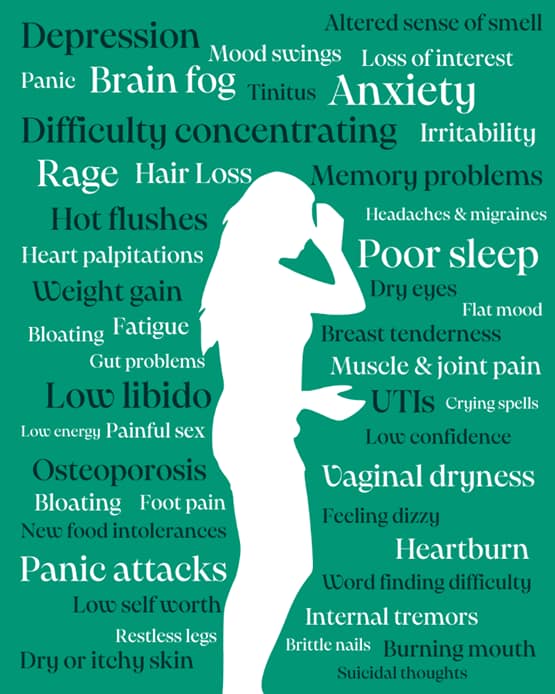
Good vibrations: Whole Body Vibration as a new treatment for ADHD?
It is widely known that patients with attention deficit hyperactivity disorder (ADHD) suffer from a range of cognitive deficits that often affect various parts of their life. Think of social functioning, academic achievement, occupational attainment, and even quality of life. The most common intervention strategies for ADHD are cognitive behavioral therapy (CBT) and/or stimulant drug treatment. Unfortunately, several problems are associated with conventional treatment strategies. For example, pharmacological treatment may lead to uncomfortable side effects such as insomnia, dry mouth, decreased appetite, and headache. Also, although stimulant drug treatment improves cognitive functions, it does not normalize patients’ level of performance. Finally, CBT and drug therapy are expensive.
“So, we tried to address the need for alternative treatment options, but what shape could such a treatment take?”
Together with colleagues from the Departments of Molecular Neurobiology and Human Movement Science, we explored the potential value of a new method for the treatment of patients with ADHD – Whole Body Vibration (WBV). WBV is known to many people as a training method at fitness centers. WBV exposes a person’s whole body to low frequency vibration (usually 10 to 30 Hz) and is often used in combination with dynamic exercises. In our studies, however, we did not demand any physical activity from our participants, as we applied WBV treatment while they were sitting on a chair mounted on a vibrating platform. This approach is easy to apply to everyone, and does not exclude people whose physical activity is restricted.
In previous research on mice, positive effects of WBV treatment were shown on several functions and processes, such as maze learning and neuronal activity. Studies in humans also showed that WBV may be beneficial for various physiological measures, including balance, oxygen uptake, heart rate, blood pressure, and muscle strength. However, we still didn’t know the potential value of WBV in the treatment of cognitive impairments.
“Is this passive application of WBV also effective in improving cognitive deficits of patients with ADHD? We tried to find out.”
Our first study (Fuermaier et al. 2014a) explored acute effects of WBV treatment on attention. For this purpose, 83 healthy university students and 17 students diagnosed with ADHD were asked to perform short tests of attention repeatedly during an experimental session while sitting on our chair mounted on the platform. Directly before the performance of half of the attention tests, participants received short intervals (2 minutes) of WBV via the vibrating platform. Our results revealed that attention performance of both healthy students and students with ADHD was significantly improved after treatment with WBV! We then looked at the prolonged effects of WBV on cognitive functions and performed a case study on a student diagnosed with ADHD (Fuermaier et al. 2014b). The participant received WBV treatment on 10 consecutive days (three times a day for 15 minutes). Neuropsychological assessments were performed before the treatment, the day after the last WBV treatment, and at a follow-up assessment 10 days later. Our results were stunning as data clearly showed a large increase in the cognitive performance of our student with ADHD from the first to the second assessment! Cognitive performance at the follow-up assessment (with no WBV treatment 10 days before) dropped to a level similar to the first assessment, which shows that improvements from the first to the second assessment were unlikely to be caused by practice effects. These results indicate that beneficial effects of WBV are long-lasting up until at least one day after WBV treatment.
“Taken together, our two studies are very exciting as they clearly show that WBV may very well be of clinical relevance for the treatment of patients with ADHD.”
The obvious advantages of WBV support this notion; such as its easiness to apply, cost effectiveness, little or no interference with other interventions, and its possibility to be set up in private or institutional settings (e.g. at home, in school or at work). Only short periods of WBV treatment per day may be enough to cause clinically relevant effects. We also expect a high compliance rate as this approach requires little effort. Furthermore, our studies showed that the application of passive WBV is not associated with any problematic side effects.
We are delighted with these promising results. However, before we can establish WBV treatment, we need more group studies that show long lasting effects of WBV treatment. In addition, since little is known about the underlying mechanism of WBV induced cognitive enhancement, it should definitely be subject of future research. WBV may not only be interesting for the treatment of patients with ADHD, but also for many other purposes. It could be used as a cognitive enhancer for school children and university students, and even used for older people to maintain cognitive functioning.
“There are many applications imaginable, inviting a broad range of potential studies.”
References
NOTE: Image by insetto scoppiettante, licenced under CC BY 2.0




Really fascinating work, Anselm!
What kind of control group(s) did you use in the first study?
How is WBV related to fidgeting?
_tassos
Thanks Tassos!
The first study followed a within-subject design, so both healthy students and students with ADHD were their own controls (vibrating vs. non-vibrating conditions).
And about fidgeting…I honestly do not know, as we focused on cognitive deficits, what is usually dominant and more pronounced in adults with the condition.
Thank you for the quick reply, Anselm.
Do you think the benefits may be in part attributable to a placebo effect (knowledge of treatment, expectations and hope, etc.) and is there a way to untangle that?
_tassos
We also thought that expectancy might have played a role, and therefore tried it out on children. Expectancy effects are for sure less pronounced in children, and it still worked:
http://journals.plos.org/plosone/article?id=10.1371/journal.pone.0140665
But I agree that many more control conditions are needed to refer the effect back to WBV with certainty …
Thanks again, Anselm! It’s a fascinating effect.
_tassos
Hello Anselm!
Great stuff! Can this finding be added to the body of literature that suggests that heightened arousal alleviates cognitive impairments in ADHD? Could we conclude that cognitive impairments are only seen in ADHD while in under-aroused states, and that ADHD symptoms are ultimately caused by under-arousal rather than deficient cognition?
Nicolas
Hi Nicolas,
Interesting thoughts!
The effects of WBV on cognition that we found are very promsing, and appar to be very reliable in several (clinical and nonclinical) populations.
However, we have to be careful with making premature attributions on the causes of the observed effects. The underlying mechanisms remain speculative, and are subject for further research. Although I agree with you that changes in arousal might be one possible explanation.
Best wishes
Anselm